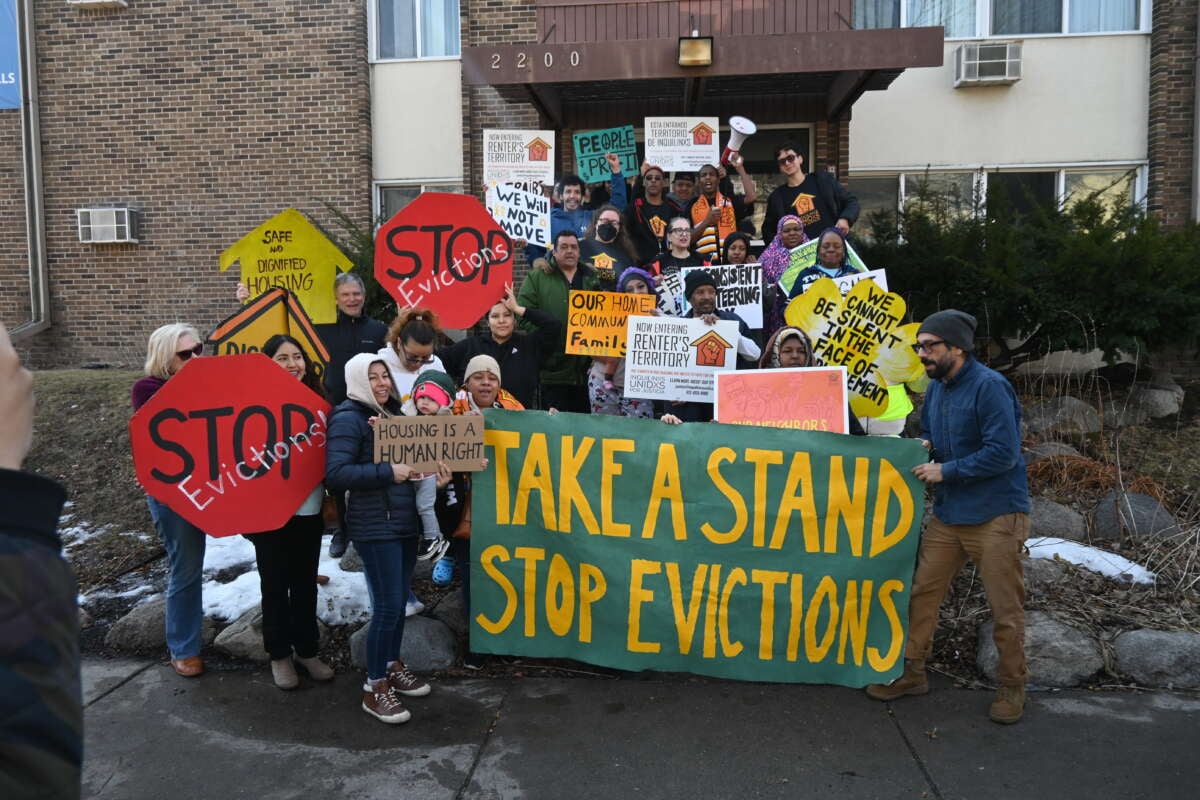The tenant-led movement in the United States is experiencing unprecedented growth, with numerous tenant unions forming across the country to challenge corporate landlords and advocate for housing rights. This grassroots movement has gained visibility and momentum, uniting tenants from cities like Los Angeles, Kansas City, Chicago, and Connecticut. By organizing collectively, these tenants are asserting their rights and demanding accountability from landlords, marking a significant shift in the landscape of housing activism.
In 2024, various tenant unions came together to establish the Tenant Union Federation (TUF). This organization aims to empower tenants by advocating for tenant protections, disrupting profit-driven practices in housing, and securing housing as a public good. The federation seeks to elevate the tenant class as a political force that cannot be overlooked. Representatives from three TUF affiliates recently discussed the challenges they face and the importance of collective organizing in a roundtable interview.
Edain Altamirano, organizing director of Inquilinxs Unidxs Por Justicia (United Renters For Justice) in Minneapolis, highlighted the threat of gentrification and displacement in her community. “Landlords and developers are trying to break our communities,” she said. “Organizing is a way to reconnect the community and keep it whole.”
Similarly, Emily LaShelle, organizing director of the Bozeman Tenants Union in Montana, emphasized how organizing provides clarity about who is responsible for tenants’ struggles. “When your life is challenging, organizing offers an opportunity to unite and confront the real issues,” she stated.
In Kentucky, Josh Poe, an organizer with the Louisville Tenants Union, underscored the power of collective action. “Here in the South, there are literally no short-term solutions. Tenant organizing is the only solution to prevent the rise of fascism,” he asserted. This sentiment reflects a broader recognition among tenant organizers that traditional political channels may not adequately address their needs.
The struggle against corporate landlords is deeply intertwined with broader societal issues, including systemic racism and economic inequality. Altamirano pointed out that the housing system often serves the interests of corporate entities rather than the community. “We’re up against gentrification and a system designed for developers,” she said.
As tenant unions gain traction, they are also forming connections that transcend geographical boundaries. Altamirano articulated the importance of national solidarity, stating, “If we have a country full of tenant unions, we could bring landlords to their knees.” LaShelle echoed this sentiment, noting the need for a collective knowledge base to expedite the growth of tenant unions.
Despite the progress made, organizers face significant challenges. Fear often inhibits tenants from standing up against landlords. LaShelle remarked, “Most challenges are rooted in fear. People have to survive in the short term, which can prevent them from taking bigger risks.” Overcoming this fear requires continuous effort to empower tenants and foster a sense of community.
Organizers also confront obstacles posed by the existing power structure. Poe described the investor class as a central adversary, alongside political entities that prioritize real estate interests over tenant rights. He stated, “In Kentucky, the Democratic Party can be as much of an obstacle as the GOP.” This highlights the complexity of the fight for housing justice, as tenants navigate a landscape where both major parties can be influenced by corporate interests.
The formation of the Tenant Union Federation exemplifies a strategic response to these challenges. By collaborating and sharing resources, tenant unions can learn from one another and build a stronger movement. Altamirano emphasized the importance of trust within the community, arguing that organizers must listen to tenants’ needs and experiences.
As the movement continues to evolve, the drive for change remains strong. Altamirano expressed her commitment to the cause, stating, “This organizing is about liberation for myself. I want to fight for my community and my family.” LaShelle and Poe echoed these sentiments, revealing that their motivation stems from a deep-seated desire for justice and a better quality of life for all tenants.
The resurgence of tenant organizing in the U.S. reflects a broader trend towards collective action in response to systemic issues. As more individuals join the movement, the potential for significant change in the housing landscape becomes increasingly feasible. The tenant-led movement not only seeks to challenge corporate landlords but also aims to reshape the narrative around housing and community empowerment.
